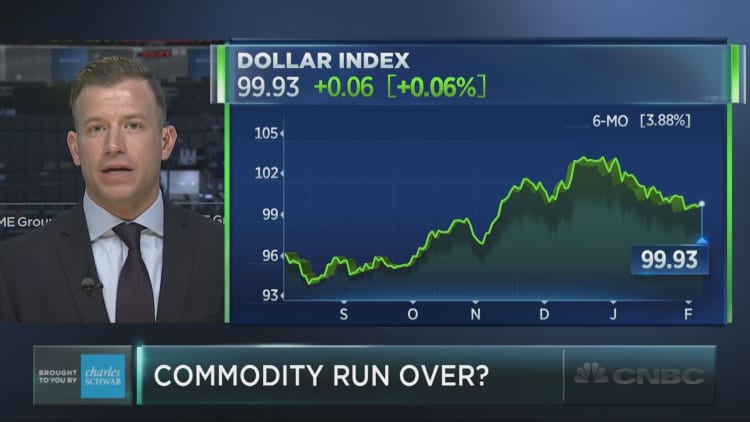
Investors are piling into commodities, sending the value of commodity assets under management rising to levels not seen since 2014.
And while some strategists say these flows to start 2017 are rather modest, investors could still see sizable returns this year.
Global commodity flows on a net basis in January rose by $3.3 billion, bringing total commodity index assets under management (AUM) to $172.3 billion, according to a new report by RBC Capital Markets commodity strategist Christopher Louney.
"A welcome uptick after a weak December, total AUM has been assisted by consistent, albeit sometimes muted, increases in index AUM. At the same time, it has suffered from wild fluctuations in the [exchange-traded products] space (which we can attribute mostly to gold ETFs, and then other precious metals)," Louney wrote in the report.
Yes, Louney wrote in his note titled "Okay Kickoff," the net moves in commodity asset allocation across the board were not extreme, but the pace at which commodity investors dove into assets increased was "respectable" and reflected investors largely moving from energy and into agriculture. Commodities remain cheap on a historical basis, he wrote, and estimates commodities as a whole will see "strong performance" in 2017.
In an interview Tuesday with CNBC, Louney said the aspect of uncertainty remains a key tenet for his gold outlook, and maintains a slightly bullish $1,245 forecast this year, revised up from $1,241 previously. Of course, the prospect of uncertainty among investors helps the yellow metal, Louney pointed out, and sees an "up-down, up-down drift upwards" pattern for gold this year.
"So we expect volatility, but with an upward tilt," Louney said Tuesday.
Gold on Tuesday was up slightly during the trading session, hovering around $1,235 per ounce. Chad Morganlander, portfolio manager at Washington Crossing Advisors, said he'd be a buyer of gold at these levels.
"We're bullish on gold; industrial metals we're somewhat more cautious on because we think that the global economy, in particular on the emerging markets side — China — is going to continue to decelerate as they take their foot off the gas pedal," Morganlander said Monday on CNBC's "Trading Nation."
China is a large consumer of copper, a metal that saw a huge surge following the U.S. election in November on investors' belief that the Trump administration would make substantial investments toward building up national infrastructure.
Morganlander thinks industrial commodities had a big run, but will soon "roll over."
"But nonetheless, we are exposed to gold, but when it comes to the other commodities, we'd be somewhat more cautious," he added.
Speculators in the crude oil market now have record long positions, according to Commitment of Traders data. Crude oil is down about 3 percent year to date and has risen a little over 68 percent year over year.
On the whole, commodities flows recently have proven to be "very muted," said Francisco Blanch, global head of commodities research at Bank of America Merrill Lynch, "and are only starting to increase."
A 2 percent increase in AUM from a "very low base" reflects a modest portfolio rotation toward inflation-protecting assets, he told CNBC on Tuesday, and does not see signs of crowding in the space.
U.S. dollar-denominated commodities could thrive and attract investors if the greenback weakens, noted Bill Baruch, senior market strategist at iiTrader. Baruch said Monday that he sees the dollar index headed lower. A stronger U.S. dollar typically depresses the price of commodities like gold and crude oil.
"So I would expect the dollar to eventually top out here and work its way back down to 95 and 90; I think this is going to attract a lot more money into commodities," Baruch said Monday on "Trading Nation."
Correction: This story has been corrected to reflect that total commodity index assets under management rose by $3.3 billion in January.





